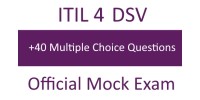The volatility dimension of the Volatile, Uncertain, Complex and Ambiguous (VUCA) world promises frequent, rapid and significant change.
And, as well as being unexpected, it brings a level of instability for an indeterminate amount of time. The Covid-19 pandemic is a prime example of this.
However, even without Covid-19, volatility can come in the form of customer demand that changes “on a dime”.
Where, in the pre-internet age, stores could determine when and how people could go shopping (controlling demand and access), online consumption means that demand can come from anywhere, anytime. This type of volatility has led to the need for network capacity and storage to be available on demand.
Volatility can also affect organizations’ reputation, for example when companies attract attention on social media and go viral for the wrong reasons.
How does volatility affect senior leadership decisions?
If an organization can’t meet demand it can be disastrous – both for short term customer experience and medium to long-term reputation.
The biggest requirement is for flexible capacity to handle a large increase in consumer activity, which can also be scaled back when demand drops. Having computing power and data storage on hand has become more the norm than the exception.
It also means having really good processes and practices in place – such as access to additional human resources via staffing firms and flexible contracts – that can support new activity at a moment’s notice.
Volatility and business viability in the service economy
Pre-pandemic, the recognized approach in the manufacturing sector was about “just in time” production with minimal inventory.
However, Covid-19 had a direct impact on the “just in time” approach and exposed companies that didn’t have reserves to continue manufacturing. Therefore, this unexpected volatility has prompted businesses to rethink the importance of having reserves in place, but only enough to avoid waste.
It’s about finding a balance for what you need and having conversations about what happens if demand increases suddenly overnight.
Making a wrong decision one way or another could put you out of business.
Mitigating volatility with ITIL® 4
Guidance from across the ITIL 4 Managing Professional and Strategic Leader modules can help organizations mitigate the impact of volatility:
1. Creating operational excellence
Having operational excellence is as vital as customer and market relevance. If you can’t do the basics to deliver services in a repeatable fashion, your organization will struggle. ITIL 4 Leader: Digital and IT Strategy emphasises the importance of operational excellence.
2. Having customer focus
As a technology leader in an organization, the best way to handle volatility is to have customer focus: talking to them and learning how their needs and demands are changing, making any volatile shifts less of a surprise.
3. Understanding the customer journey
Understanding the customer journey – through the guidance in ITIL 4 Specialist: Drive Stakeholder Value – helps you see the steps in the journey where unexpected volatility could create a potentially poor customer experience.
4. Building resilient operations
Netflix’s “Chaos Monkey” philosophy – “randomly terminating instances in production to ensure engineers implement services to be resilient to instance failures” – is a way of breaking things to ensure you know how to continue delivering services if things go wrong or volatility spikes.
5. Focusing on what’s not volatile
Amazon CEO, Jeff Bezos, advises companies to think about what’s not volatile in the eyes of your customers. For example, they’re always going to care about great customer service and good prices. Therefore, focus on improving your IT-enabled products and services for what remains constant.
This advice on continual improvement is reflected throughout ITIL 4 and gives you a sense of hope and truth in the midst of volatility. So, even if there are “rough seas”, you can still access trusted “navigation” to chart your course.
News by Erika Flora – Beyond20







